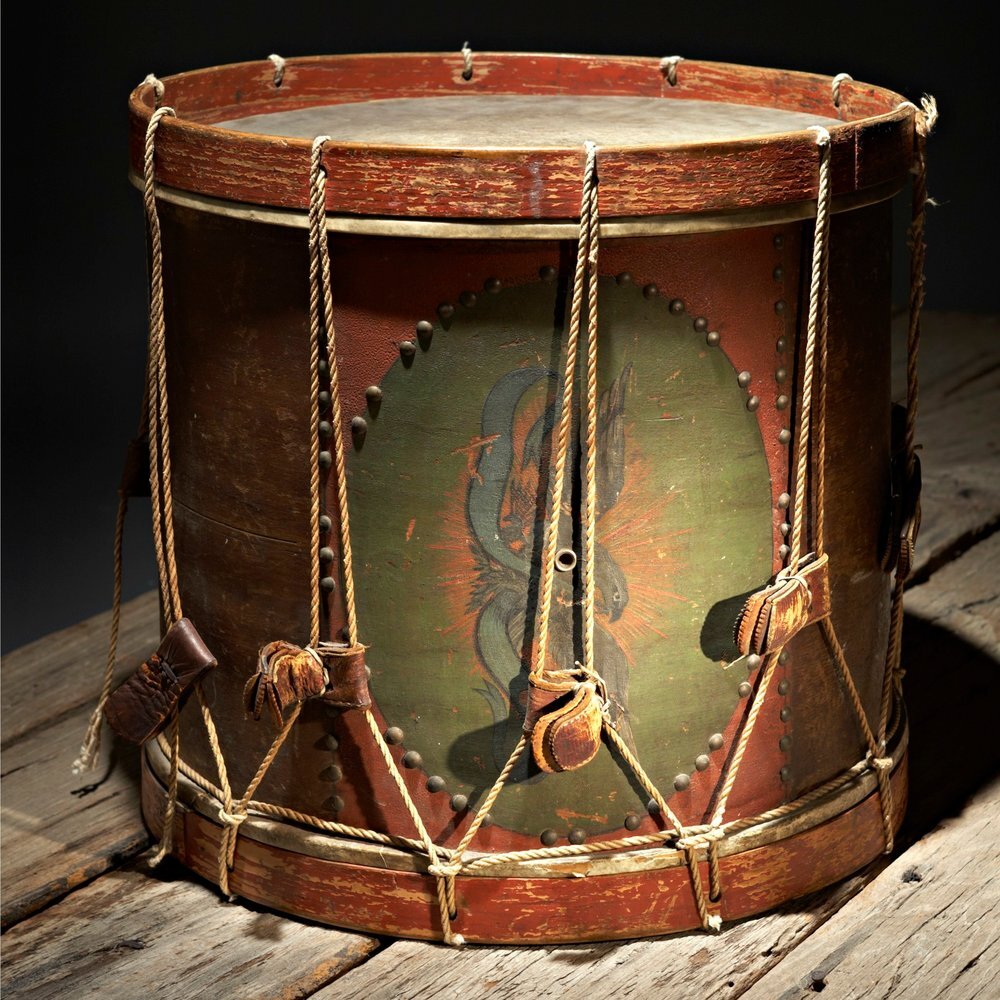
Border State: Kentucky and the Civil War
Closed Exhibition. See The Commonwealth: Divided We Fall For a new exhibition about Kentucky and the Civil War.
Border State: Kentucky and the Civil War
2nd Floor
Frazier History Museum
July 13, 2019 – 2021
Kentucky was the birthplace of both wartime presidents, Abraham Lincoln and Jefferson Davis. Not surprisingly, the state’s allegiances were divided.
White Kentuckians whose ancestors hailed from states like Virginia and South Carolina were loath to break loyalty with the South. Many of them supported the right of a state to preserve slavery. Yet most of Kentucky’s free citizens opposed secession, and the economic prosperity of Kentucky increasingly depended on Northern commerce.
Kentucky’s resources — abundant crops and livestock, navigable rivers, and extensive railways — made it a plum for commanders of both armies. President Lincoln thus recognized the Union’s fragile hold here: “I think to lose Kentucky is nearly the same as to lose the whole game.”
Select Artifacts
First National Confederate Flag, c. 1861
Flag of the Confederate States of America, believed to have accompanied General Gustavus Smith (1821 – 1896) at the Battle of Seven Pines, fought in Henrico County, Virginia, May 31 – June 1, 1862. American, c. 1861. Cotton.
Similar to the U.S. flag maintaining the full number of stars, the Confederate flag had stars representing every state considered “Southern.” This included stars for Kentucky and Maryland, neither of which would ever secede or join the Confederacy.
Kentucky-born Confederate General Gustavus Smith likely carried this flag during the Battle of Seven Pines.









The Bloedner Monument, 1862
Currently not on view. Coming back later this Spring in our new exhibition The Commonwealth: Divided We Fall.
Bloedner, August (1827 – 1872), carved by. 32nd Indiana Infantry Monument, installed at the site of the Battle of Rowlett’s Station, Munfordville, Kentucky, 1862, and relocated to Cave Hill National Cemetery, Louisville, Kentucky, 1867. American (Munfordville, Kentucky), 1862. St. Genevieve limestone and Indiana limestone. On loan from the National Cemetery Administration (NCA), U.S. Department of Veterans Affairs.
The 32nd Indiana Infantry Monument, better known as the Bloedner Monument, has been housed at the Frazier since August 18, 2010.
Carved in January 1862, the 3,500-lb. limestone memorial features an eagle relief and a German-language inscription. It is believed to be the nation’s oldest surviving Civil War monument.
Private August Bloedner of the 32nd Indiana Infantry, a Union regiment comprised entirely of German-American immigrants, carved the monument after the Battle of Rowlett’s Station, which took place December 17, 1861 in Munfordville, Kentucky, to mark the interments of fellow soldiers who died there.
In 2010, the Frazier Museum obtained the monument through a long-term loan from the NCA. During museum hours, access to it is open to all members of the public free of charge.
36-Star American Flag, c. 1864
William F. Schieble Co. Flag of the United States of America. American (Philadelphia, Pennsylvania), c. 1864.
President Lincoln refused to recognize the legitimacy of the secession of the Confederate States. As demonstrated on this flag, the U.S. expressed this sentiment by maintaining a star for every state throughout the war. Nevada became the 36th state to enter the Union on October 31, 1864.
Lady’s Dress, c. 1864
Lady’s dress, American, c. 1864. Silk and cotton.
For many cosmopolitan women, war was no excuse for a lady not to look her best. Women were able to keep track of fashion trends in Harper’s Weekly, which illustrated the latest styles coming out of Paris.
McClellan Saddle, Officer’s Grade, c. 1860 – 1865
Model 1859 McClellan Saddle, Officer’s Grade. American, c. 1861 – 1865.
Union Infantry Major’s Uniform, c. 1860 – 1865
Union Infantry Major’s Uniform, belonging to Major John L. Davison. American (Louisville, Kentucky), 1861. On loan from H. Deppen.
Just months before John enlisted in the Union Army, he was living a carefree life in South America. Feeling that he needed to mature and get his life in order, the family sent his brother, Frank, to bring him back to Kentucky.
Shortly thereafter, a rift formed in the family when John enlisted in the Union Army and Frank joined the Confederate ranks.
Casket Wagon, c. 1860 – 1880
Casket wagon. American, c. 1860 – 1880.
In the early months of the war, neither side had an official system for counting the dead and wounded, much less a process for notifying the families of deceased soldiers. Families often received death letters from companions of the deceased, not government officials.
Cave Hill Cemetery in Louisville made plots available for Federal soldiers; however, there was prevailing opposition to burying Confederate dead among their Union counterparts. In response, two Louisville citizens with Southern sympathies privately purchased lots alongside the Federal ones, burying forty-five Confederate soldiers and civilian political prisoners in the Federal section.
Beginning in 1867, the re-interment of Federal soldiers hastily buried on the battlefield began. The first soldiers moved to Cave Hill were the twelve members of the 32nd Indiana Regiment, for whom the Bloedner Monument was carved.
This casket wagon was used for re-interment efforts as well as the funerals of veterans buried at Cave Hill National Cemetery. Today, there are about 6,100 Union and 228 Confederate soldiers buried in the cemetery.
